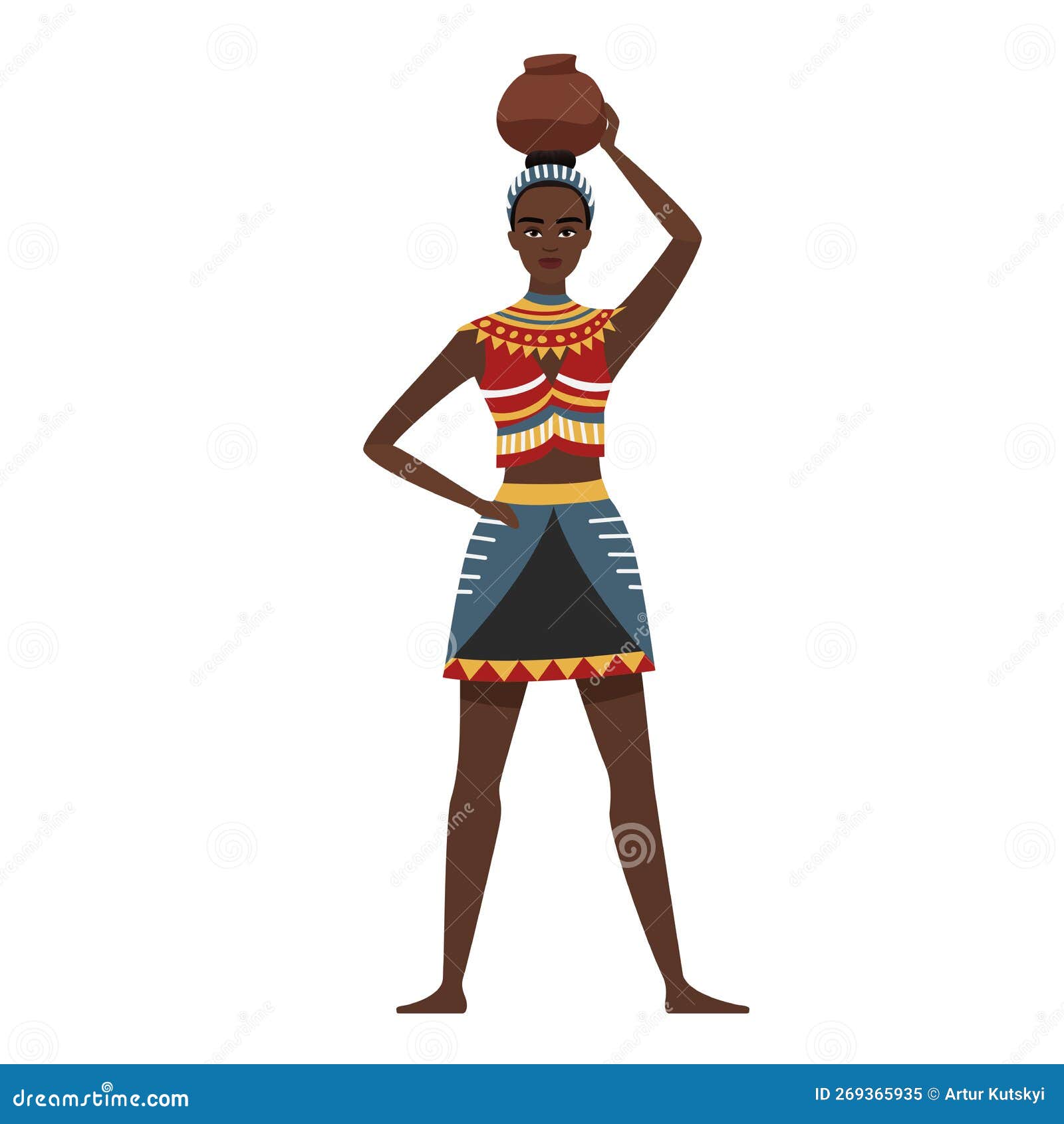The image of an African woman balancing a pot filled with water atop her head is emblematic of resilience, strength, and cultural heritage. This enduring representation transcends mere physicality; it encapsulates the profound narrative surrounding the African woman’s role within her community and the larger sociocultural framework. The act of carrying water, a necessity for survival, transforms into a poignant metaphor for the burdens and responsibilities shouldered by women across the continent. As one delves deeper into this compelling subject, it becomes evident that the symbolism woven within this daily ritual reveals the multifaceted nature of female existence in African societies.
To comprehend the significance of water in African culture, one must appreciate its critical value as a life-sustaining resource. Water scarcity is a prevailing issue in numerous regions, shaping daily routines and social dynamics. The African woman, often designated as the primary water-fetcher, embodies an intersection of nurturer and provider. This duality is not merely functional; it is a statement of empowerment. Each trip to the water source—regardless of the distance or hardship—involves considerable strength and determination. Hence, she becomes a symbol of fortitude amidst adversity, navigating challenges with grace and efficacy.
Moreover, the act of carrying water is steeped in tradition. It has been passed down through generations, encapsulating the rich tapestry of cultural practices that define various communities. The water pot itself can be viewed as an artifact, reflecting regional craftsmanship and aesthetic sensibilities. Each pot narrates a tale of its maker, the materials used, and the communal identity it signifies. In this light, the woman becomes a custodian of culture, maintaining and transmitting values and customs through her daily labor. The physicality of carrying the water is a metaphor for the burdens women often bear, entwined with expectations of family and community responsibilities.
Among various ethnographic perspectives, the dichotomy of the physical and the spiritual emerges prominently. The woman, towering while balancing her load, exemplifies not only physical strength but also spiritual resilience. She navigates not only the tangible hurdles of her environment but also the intangible challenges imposed by societal norms and expectations. This dual struggle is emblematic of the broader experiences that women face. Carrying water becomes a rite of passage, imbuing her journey with significance that extends beyond the act itself. It is an assertion of identity, a celebration of femininity intertwined with cultural heritage.
In numerous African cultures, water is also imbued with spiritual connotations. It symbolizes life, purity, and rebirth. The act of gathering water can be perceived as a sacred ritual, imbued with communal connections and reverence for nature. In this sense, the African woman, silhouetted against the shimmering horizon with her water pot, is a bridge between the corporeal and the ethereal. She embodies the understanding that water is not merely a physical resource; it is a sacred element that fosters life and sustains communal ties. Therefore, her role transcends the mundane and enters the realm of the spiritual, invoking thoughts of heritage, ancestry, and continuity.
Furthermore, the visual imagery of the woman carrying water fosters contemplation about gender roles and societal structures. In many parts of Africa, patriarchal norms dictate the division of labor and resources. Despite these constraints, women have historically galvanized social movements, catalyzing change within their communities. The act of carrying water thus becomes a silent but potent form of resistance. It is a subversive statement against systemic inequities. The woman’s prominence in such labor underscores a paradox: while she may be tasked with arduous physical labor, she is simultaneously emerging as an agent of change, advocating for her rights and the welfare of her community.
In contemporary contexts, the portrayal of women carrying water also invites discourse on modernity and development. As urbanization progresses and technological advancements permeate rural areas, the dynamics of water collection are transforming. However, this shift does not negate the historical context or the significance of the act itself. Instead, it illustrates the adaptability of African women. They continue to navigate modern challenges while retaining their cultural identity. Whether utilizing traditional methods or embracing new technologies, African women persist as stalwarts of endurance, creativity, and innovation.
In conclusion, the image of the African woman carrying water on her head serves as a powerful metaphor, encapsulating the myriad complexities of her existence. It symbolizes resilience, cultural continuity, and spiritual depth while also challenges prevailing gender norms. Through this lens, one can appreciate the strength exhibited by countless women who partake in this daily ritual. Their stories, woven into the fabric of African society, remind us that behind every act of labor lie narratives of courage, agency, and tradition. As society evolves, the legacy of these women will undoubtedly influence future generations, reinforcing their stature as vital pillars of their communities.
Ultimately, the strength of an African woman is not merely in the physical act of carrying water but in everything she represents: a confluence of tradition and modernity, a custodian of culture, and an unwavering force within her society. This richness of meaning transforms a simple act into a profound symbol of African womanhood, celebrated and revered across time.
